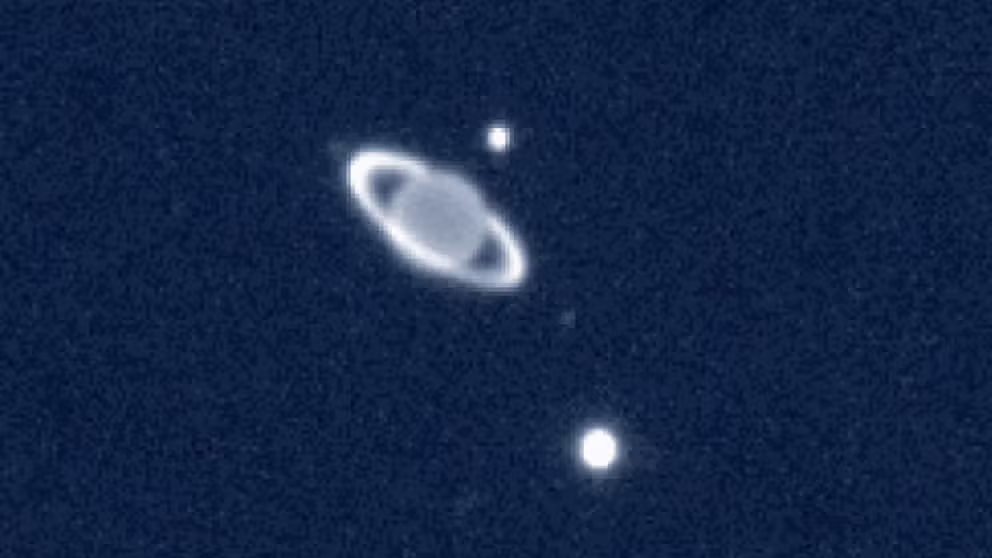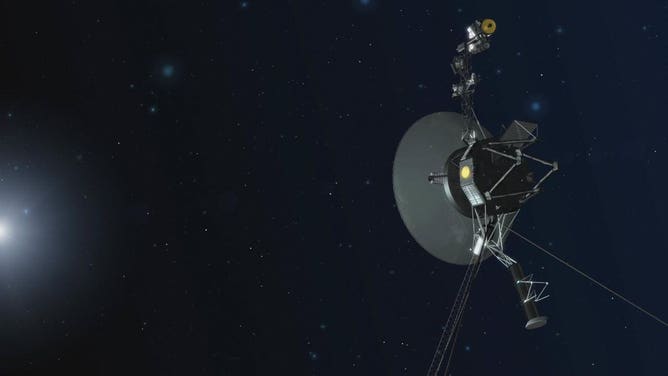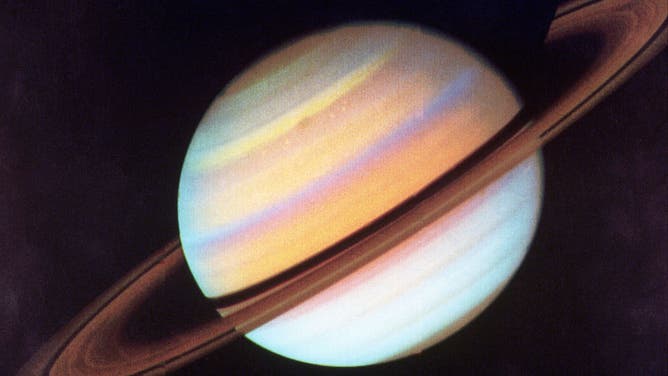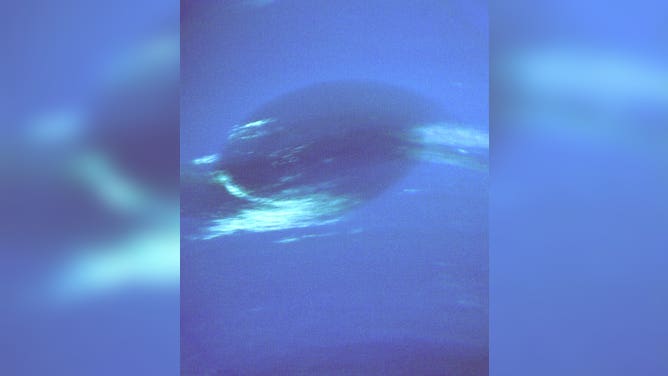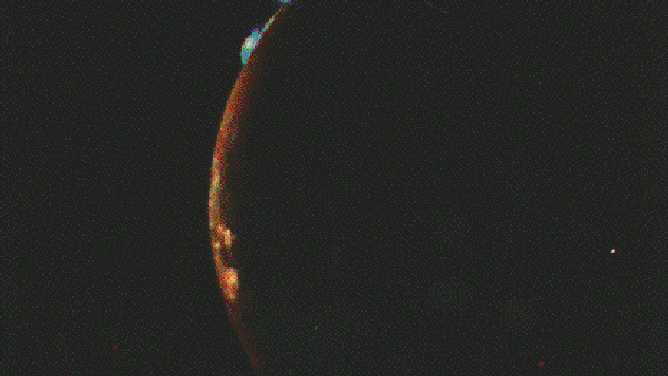Voyager 1 and 2 continue offering new mysteries from interstellar space
Nearly every day NASA gets back multiple hours of data from both Voyager 1 and 2. Voyager 2 is on sabbatical until NASA can reestablish contact through the Deep Space Network, possibly not until mid October.
Discovering Uranus
Uranus was discovered 241 years ago.
Nearly forty-six years is a good run for a spacecraft -- a historic, record-breaking run. Is retirement near for NASA’s interstellar spacecraft Voyager 1 and 2? Not yet, according to the team working to eke out a few more years with the twin spacecraft because there is still much to learn.
An incorrect command sent to Voyager 2 on July 21 has left the mission science team at NASA’s Jet Propulsion Laboratory in California unable to get data from the spacecraft.
In the meantime, they are hoping to use the Deep Space Network to send out the correct command and hit the intended target more than 12 billion miles from Earth. Otherwise, the data blackout will continue until an automatic software command on Oct. 15 points Voyager back at Earth.
TELESCOPE USED TO STUDY MYSTERIES OF UNIVERSE RELEASES FIRST IMAGES IN STUNNING DETAIL
"October is a long time to wait," Voyager project scientist Linda Spilker at NASA’s JPL said.
Good news came this week, when Voyager 2’s carrier signal was detected by using the Deep Space Network, allowing NASA to know that the spacecraft is still functioning as expected.
"That told us, OK, Voyager is still there, Voyager two, it's still operating, it's still sending back data. It's doing everything it's supposed to be doing. It just kind of missing us," Voyager Program scientist Linda Spilker said. "It's not pointing at the Earth. So that was really, really a good feeling for everybody on the team to know, okay, Voyager two is still there; everything looks good."
The problem is Voyager 2 is pointed about 2 degrees away from Earth.
"In the case of Voyager two at 12 billion miles away, that's a long, long, skinny triangle," Spilker said. "And it turns out that some people did that calculation, and the offset in this is similar to the Earth-Jupiter distance."
If NASA had a Deep Space Network dish on one of Jupiter's moons, Voyager might have a good signal there. But that’s not possible. Over the next several weeks, NASA will attempt to send the correct command to Voyager 2 using the 70-meter DSN station and hope to reach the spacecraft.
VOYAGER 1 CONTINUES ZOOMING THROUGH INTERSTELLAR SPACE 45 YEARS AFTER ITS LAUNCH
"It’s unlikely it'll get through just because the point of off-pointing is so large, but it might," Spilker said.
Spilker explains what kind of data the science community is missing out on while Voyager 2 is on a communication break with Earth.
Nearly every day, NASA gets back multiple hours of data from both Voyager 1 and 2.
Voyager 2 exited the heliosphere in 2018 -- the protective bubble of solar wind considered the boundary of our solar system.
The Voyager 2 spacecraft still has five instruments operating, each using only 4 watts per year.
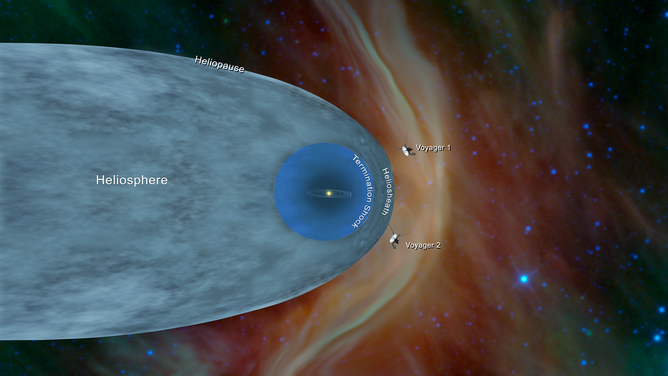
This illustration shows the positions of NASA’s Voyager 1 and Voyager 2 probes outside the heliosphere, the region surrounding our star, beyond which interstellar space begins. (Credit: NASA/JPL-Caltech)
(NASA)
"We’re getting information about what's the magnetic field like in interstellar space. How is it changing?" Spilker said.
Voyager 2 continues to measure the effects of the Sun and cosmic rays in space.
Voyager 2 exited the solar system in 2012 and is further into interstellar space than Voyager 2, heading in a different direction at a slower speed.
"We’re still seeing new phenomena that we don't understand," Spilker said.
Among the new phenomena detected by Voyager 1 is something called Pressure Front Two detected by Voyager 1’s magnetometer and plasma wave data, Spilker said
"The plasma density all of a sudden jumped up by two or three times what it had been previously. And a lot of times when these events happen, they happen, and then they die out after a few months or not even a few weeks, you'll see it go away," Spilker said. "In the case of Pressure Front Two. Everything jumped up, and it has stayed pretty steady since then."
The change has lasted for over a year.
HOW TO WATCH FOX WEATHER
"We're just watching and wondering what created it and why is it lasting for so long," Spilker said.
Voyager 2 has yet to encounter the same thing; it is unknown if it will.
Launched in 1977 with an initial four-year lifespan, the Voyager mission has no end date.
In the coming years, the Voyager team will turn off instruments one at a time on both spacecraft to preserve power and the life of the spacecraft. The first planned shut-off happens in 2026 for Voyager 2; however, its four remaining instruments will continue to operate.
